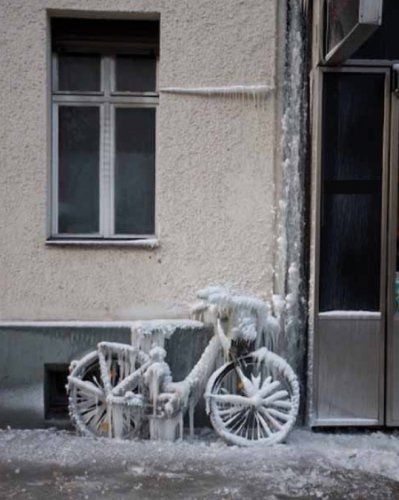Nashville area bike plan wins national award but I say that Western Baltimore County plan's recommendations compare very favorably

Cover image, Inner City Out (Innen Stadt Auben) by Eliasson.
The Nashville Tennessean reports, in "Bicycle, walker study gets award," that the metropolitan planning organization's Regional Bicycle and Pedestrian Study" received the "Best Project Award" from the Planning Council of the Institute for Transportation Engineers. This was the first time that a non-motorized transportation study received this award, so it's a big deal. From the article:
It applauded the linking of greenways, bike lanes and sidewalks to urgent health and social issues, such as obesity and congestion.
Some the deeper discussion of these types of issues didn't make it into the "final" draft version of the Western Baltimore County Pedestrian and Bicycle Access Plan, a project for which I served as the project manager and wrote the plan. But these issues were discussed in earlier versions of the plan. But with one or two exceptions, all of the recommendations that I made in the drafts were carried into the final plan (and some were improved actually, by my boss, in the final version, e.g., I forgot about bike stations, and she didn't).
The Nashville plan policy recommendations are written up differently, and I like how they did it, organizing them according to how they termed the recommendations, what in bike and ped planning is more typically called "engineering, education, and encouragement":
1) Provide Facilities - Provide a comprehensive, safe, and convenient bicycle and pedestrian system for a wide range of skill levels that is interconnected and accessible making it easier for individuals to choose to walk and bicycle
2) Build Support - Build a collaborative and cooperative environment within the region among stakeholders and communities that supports more non-motorized transportation choices
3) Create Policies & Programs - Integrate walking and biking within the region through policies and programs that foster accommodations for improved safety, mobility, and health
4) Increase Awareness - Elevate the level of understanding and awareness of the benefits, uses, and needs of non-motorized transportation.
This is what we did in Baltimore County too, although I couldn't use the terms "build support" or "increase awareness" quite as directly.
But if you read the recommendations in the section Education, Encouragement, Enforcement, Evaluation and Appendices, it's fair to say that collectively they are quite strong, maybe even better than Nashville's. (Like the Nashville plan, I had program examples in earlier drafts, but for the most part, specific discussion of best practice examples from around the country such as the Portland programs, or Seattle's Feet First mapping projects, were excised from the final version.)
The other thing I did was reorder how the facilities recommendations were outputted, from a master alphabetized list for the area studied (the urban sections of four council districts, about 110 square miles), to lists organized by Council District. This was designed to help make implementation advocacy more focused, providing elected officials with a list of proposed improvements specific to their Council District, a list that they can use in discussions with the County Executive, budget office, Department of Public Works, the State Highway Administration, other stakeholders, and citizens.
A recommendation that was dropped from the published draft was creating subcommittees for each Council District as part of the proposed (to be enacted by ordinance) Bicycle and Pedestrian Advisory Committee, although that could still happen. The idea there again was to provide the right framework, an organized structure where citizens, stakeholders, and county and state government agencies come together and develop specific facilities and programming plans focused at the Council District level.
This is supported by other recommendations calling for the creation of sustainable transportation elements within community plans including programming plans, zoning changes, etc.
When I write here in this blog about systems, structures, and processes, this is what I am talking about--how to create a robust set of organizational systems, policies, regulations, programs, and practices all designed to be congruent and to generate the desired positive outcomes, in this case, improvements in the walking and bicycling environment in Baltimore County, Maryland, a suburban jurisdiction where transportation policies have prioritized the automobile over all other forms of transportation.
It's about building a process for generating what you want as a matter of course, addressing the evident gaps with programs, policies, and regulations, so that generating preferred outcomes is not some lucky accident, but a measured (and measurable) process that is built into the system (what business writers call the Oragnizational DNA).
I am very much thankful for having had the opportunity to do the plan in Baltimore County-- even if it doesn't end up winning national awards!--and having had the opportunity to lay down a structure for what I see as the ideal framework for "creating policies, providing facilities, building support, and increasing awareness" for sustainable transportation practice generally, and walking and biking promotion specifically.
Labels: change-innovation-transformation, organizational development, planned change, sustainable land use and resource planning, sustainable transportation, transportation planning, urban design/placemaking



0 Comments:
Post a Comment
<< Home